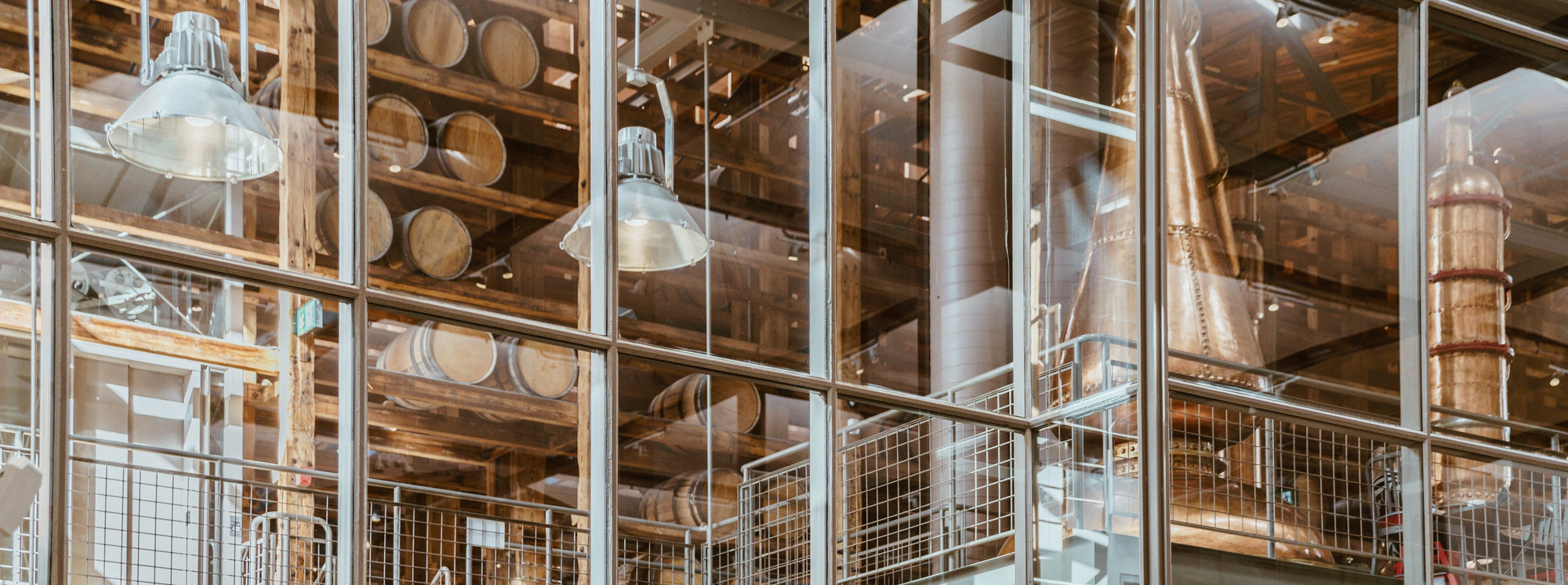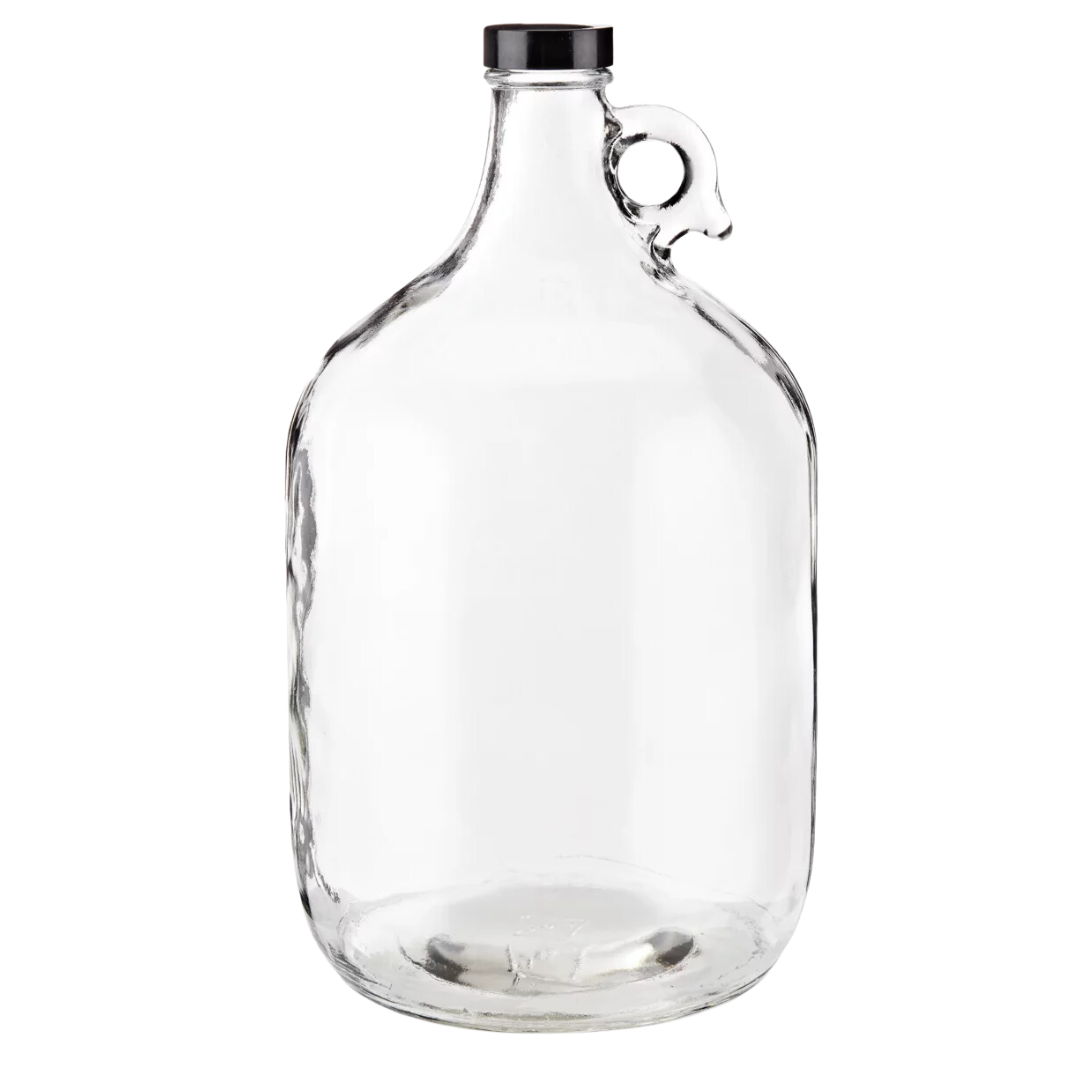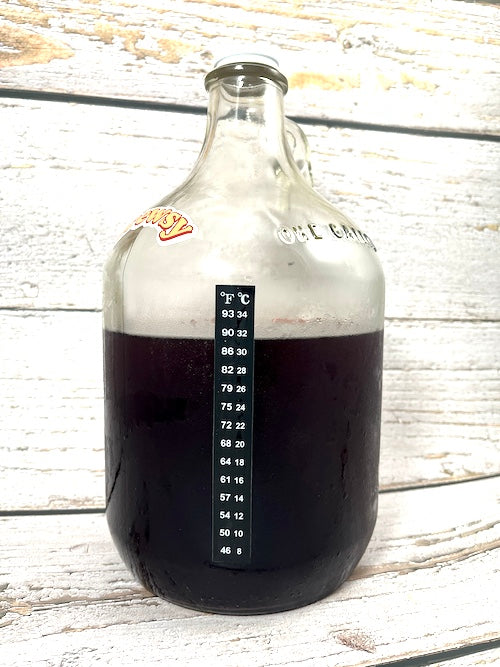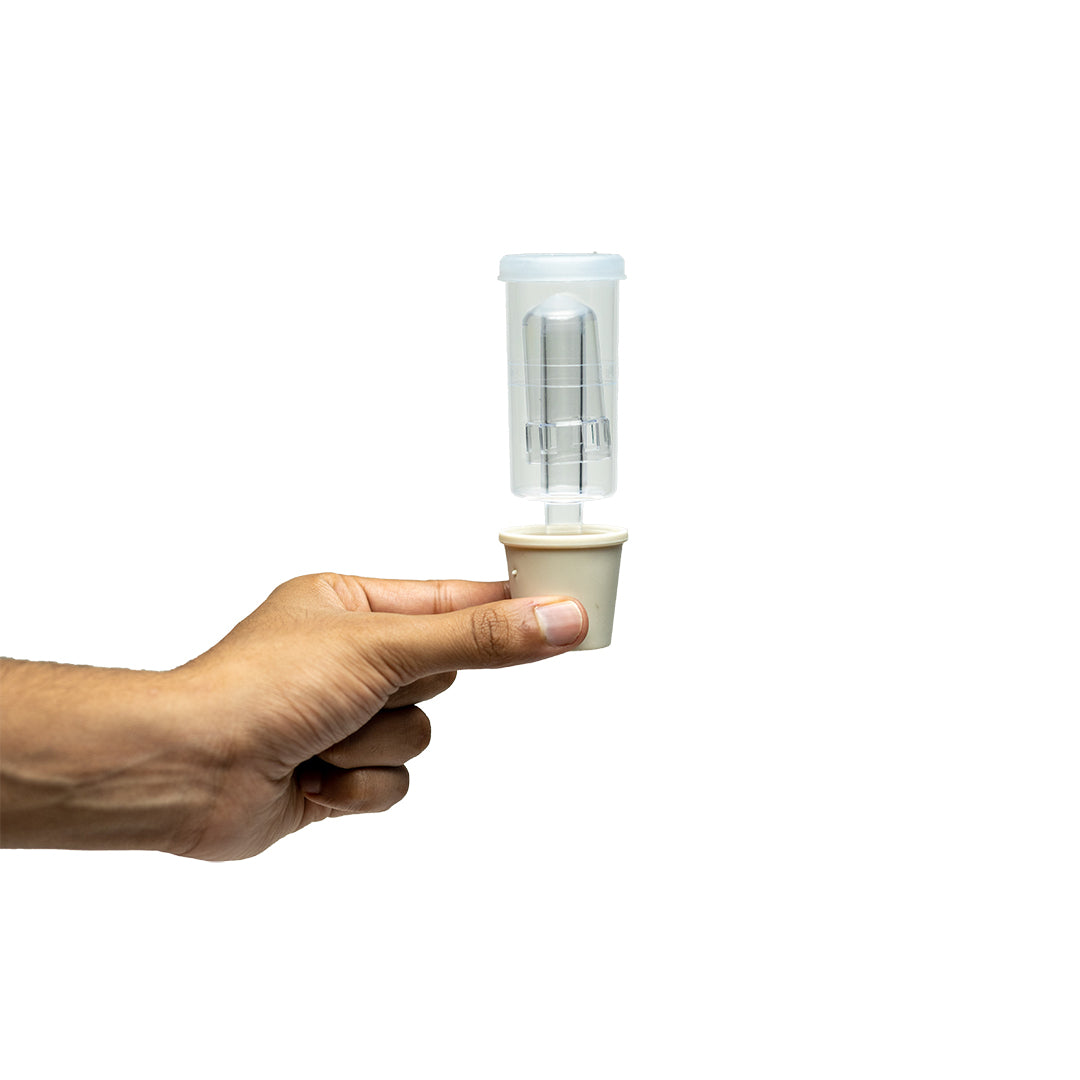



What's in a Brewsy bag? Want to know how to make sugar free wine? Find out here! Common FAQ's.
Each basic kit has three Brewsy bags and two airlocks.
Each Brewsy bag turns one gallon juice into wine in seven days. Each little packet is a combination of six different ingredients — specially formulated to create really tasty wine, super fast! You can read about how these ingredients work in tandem here.
Each airlock is like a special cap for your juice container — it lets carbonation escape as the fermentation goes on, but prevents anything else from getting in. Ours are universal, and fit almost every juice container. They’re also infinitely reusable, unlike the brewsy bags.
Along with the three brewsy bags and two airlocks, you get:
- labels for your gallon jugs: personalize your wine by giving it a name, set the date and your recipe
- a funnel for your dry/wet goods
- a stick on thermometer to monitor your fermentation temperature
- access to our private Facebook communities - Brewsy's First Pour Club and Club Brewsy - to share your new favorite hobby with others &
- direct communication with our wine, cider and/or mead making experts to help guide you through any and all of your questions as you go through your journey!
Each Brewsy bag is a carefully-tested blend of six different wine making
ingredients! We've tested over a thousand bottles of wine to make sure
the ratio of ingredients is just right.
We use the following ingredients:
1). Organic wine yeast
We've chosen a commercially-unavailable strain of wine yeast, only available to professional wineries (and now you!)
We chose the yeast for its ability to bring out delicate, floral flavors
in your wine, and also for its ability to work fast (about 5 days) with
very little 'babysitting.'
2). A blend of organic yeast micronutrients and yeast energizer
To make sure the yeast have all the nutrients they need to work quickly
and stay healthy. Our micronutrients hydrate the yeast and give them
speed + sustenance as they convert sugars into alcohol.
3). Potassium Bicarbonate
Added to reduce acidity in your wine.
4). Bentonite
A volcanic clay that clarifies your wine and reduces cloudiness.
5). Malolactic Culture
We co-innoculate malolactic culture in a Brewsy bag, which works for weeks
to convert harsher, malic acids to smoother lactic acids.
Brewsy scientists spent months and months reverse-engineering the
factors behind commercial winemaking and scaled them down into a little friendly packet!
Six ingredients work in tandem in each Brewsy bag to create tasty wine at record speed for you.
Besides our secret blend, brewsy works no different than other natural
winemaking: yeast eat sugars in juice to produce alcohol, creating carbonation as a by-product. This is the same way all alcohol around the world is made, even beer and liquor! It’s called alcoholic fermentation, and it’s awesome.
Yes!
The Brewsy formula will actually work with almost all store-bought juice (even Arnold Palmer, if you wanted to go there). In U.S grocery stores, most juice is preserved with ascorbic acid, which works completely fine with our formula and does not impact the fermentation.
We've seen Brewsy made with Gatorade, Arnold Palmer, and Capri Sun before — and even orange soda and Mountain Dew!
The one preservative you'll want to look out for is potassium sorbate — but luckily, it's very, very rarely found in American juice brands. If you're using juice from a different country, keep an eye out for it, though. Also, occasionally some family farms and orchards preserve their juice with it, so just make sure your juice doesn't have any in it before you use it with Brewsy.
Aside from that, Brewsy will work with any store-bought juice — other additives and preservatives won't effect the fermentation much.
Yes!
All of the above. We are happy to have created a very fantastic and good-for-the-world product.
We wouldn't do it any other way.
First we should say don't worry!
You can still make sugar-free wine with Brewsy by adding sugar.
In fact, every single recipe we have can be made low-sugar or no-sugar.
We let YOU decide how sweet you want your wine for every single recipe.
If you're using store-bought juice and not special wine grape juice,
you'll need to add sugar to feed the yeast. Wine grapes are bred to be
especially sweet, so that they have enough sugar for the yeast to
convert into alcohol.
But store-bought juices aren't sweet enough, and the yeast don't have
enough food (sugar). Since they don't have enough food without adding
extra sugar, the yeast won't be able to produce very much alcohol, and
your wine will have a low alcohol content.
By adding sugar, we're giving the yeast enough food to eat! If you choose to make your wine dry or keto, the yeast will eat all the sugar and convert it into alcohol, and you'll have sugar-free wine.
You can check out some of the science behind it in one of our tutorial videos below.
Absolutely!
In fact, every single recipe we have can be made low-sugar or no-sugar.
We let YOU decide how sweet you want your wine for every single recipe.
Note:
it might seem strange, but you still need to add a little bit of sugar
to your juice for these recipes, even for no-sugar. The yeast in your
brewsy bag eat sugar to make alcohol, and the sugar in your juice just
isn’t enough!
PS — If you're reading this and you already have your kit, check out this article for our guide to keto wine.
The Brewsy bags are 100% vegan and sulfite free!
In each kit, we give you one optional, separate clarifying agent that you
can use to make your wine very clear, very fast. It is completely optional and your wine will become very clear without it - it will just take a few days longer to become completely clear. Almost all professional wineries use this clarifying agent to clarify their wine, too!
If you opt to use the clarifying agent, it does contain a very small amount of sulfites and shellfish.
We get this comment a lot on our ads!
While most people on our ads are joking, the answer is actually yes — you can make Brewsy with water!
You just have to add sugar. The sugar serves as food for the yeast — it's what they consume to produce alcohol.
But! if you don't want your wine (or water wine) to be sweet, don't worry —
the yeast will eat virtually all of the sugar, leaving you with dry, sugar-free wine.
After you make your water wine, we'd recommend back-flavoring it with herbs
(mint and sugar for a mojito!), spices, or flavorings like Mio or Kool-Aid. And you'll likely want to carbonate it, too!
You will need
- some juice (or another sweet drink, like iced tea) and
- some sugar (or honey).
If you purchased the kit with no glassware you will need a gallon container to mix your sugar and ferment your wine in. You can grab one from our shop. (4 gallon pack)
You need to add honey or sugar to our juice because wine grapes are twice as sweet as regular juice that we purchase in the supermarkets — so we add sugar to account for this.
(Don't worry — you can still make sugar-free wine, if you want. We'll show you how to... check out our keto - sugar-free recipe
Everything you need to know!
Don't worry, making wine with Brewsy is much easier than you might think! It
only takes about 7 days and requires about 10 minutes of preparation.
As you prepare your Brewsy and pick out your juice, add your sugar and your Brewsy bag. This is preparing your mix for fermentation.
During fermentation, your Brewsy stays in a warm, dark place. The yeast in your Brewsy bag gets to work, and starts converting sugar into alcohol.
After around 5 days, or whenever your Brewsy tastes dry enough, it's time to move onto the next step.
This is where "Cold Crashing" comes in...
Cold-crashing means putting your wine in the fridge. The cold forces all the yeast and solids to the bottom of your wine, (cider or mead) making it easier for you to remove them in the next step. Without removing the yeast and solids in your wine, your wine would taste a little funky.
This also stops the fermentation — so it prevents the yeast from eating any more sugar and turning it into alcohol.
Racking means pouring your wine off of the layer of solids that formed at the bottom of your jug during cold-crashing. You'll pour your wine into a different container, leaving the sediment at the bottom behind and discarding it.
Removing all of this sediment helps give your wine a clearer, more refined taste!
Our easy to follow instructions that comes with your kit goes over every step, so check that out as well! Find a digital copy of it here!
If this is your very first batch, we definitely recommend going with any variety of cranberry juice. You can use cranberry cocktail, 100% cranberry, or a cranberry mixture.
It's crisp, and it’s got a bold flavor that's made it an all-time winner.
There are a lot of options to choose from, and all of them are good, so take
your pick! But, here are our personalized recommendations:
🍷 If you like red wine, try a cranberry-blackberry to start.
🥂 If you like white wine, go for a white cranberry-peach.
🍎 And if you’re a cider person, pick up a few bottles of cranberry-apple.
Once you've selected your juice, head on over to our starter recipe to get things rolling!
You can use any kind of juice — it doesn't have to be 100% juice. You could even use Gatorade!
And yes, any juice that needs to be refrigerated is perfectly fine to use
with Brewsy. Fermentation starts so fast that your juice will become alcohol very quickly — and that alcohol will kill any bad bacteria!
Yes!
The Brewsy formula will actually work with almost all store-bought juice (even Arnold Palmer, if you wanted to go there). In U.S grocery stores, most juice is preserved with ascorbic acid, which works completely fine with our formula and does not impact the fermentation.
We've seen Brewsy made with Gatorade, Arnold Palmer, and Capri Sun before — and even orange soda and Mountain Dew!
The one preservative you'll want to look out for is potassium sorbate — but luckily, it's very, very rarely found in American juice brands. If you're using juice from a different country, keep an eye out for it, though. Also, occasionally some family farms and orchards preserve their juice with it, so just make sure your juice doesn't have any in it before you use it with Brewsy.
Aside from that, Brewsy will work with any store-bought juice — other additives and preservatives won't effect the fermentation much.
For those delicious bold, dry reds, we have a few go-tos.
1) If you like full-bodied, tannic reds, try cran-blackberry juice, made semi-dry on the drink designer. Then, check out our tips for how to add tannins at the end of the process.
2) If you like smooth, fruit-forward dry reds, combine 2 parts dark cherry juice and 1 part red or concord grape juice. Select semi-dry on the drink designer.
Make sure your cherry juice is 100% cherry juice. Check the ingredients, and steer clear of brands that combine cherry juice with apple or pear juice, which dilute the flavor of the cherries.
After you've finished the process, allow 2-3 weeks for aging in the fridge for the best results!
3) If you like your reds on the bolder, more acidic side, pomegranate juice turns out awesome, too. We recommend making it semi-dry on the drink designer.
For the flavor of your dry red wine to really develop, prepare to let your
wine age for 2 to 3 weeks. Dry wine can sometimes taste harsh at first to some people — age will mellow your wine out and create a smoother, more refined flavor.
For our white wine lovers, we recommend using white-cranberry peach juice!
It may sound like an interesting choice, but it's our favorite juice to use for white wine.
We'd recommend skipping the nectar, or any smoothie-like drink, and going for the juice variety instead.
In general, juices that are “thicker” won’t make the best wine, because it's hard to separate their natural sediment from the yeast and other ingredients in your Brewsy packet, so you'll lose a lot of wine at the
end.
Thinner juices with less pulp will produce much clearer wine!
The short answer is technically, yes!
If you're a big fan of a certain sugar-free juice, you can use it to make Brewsy. But the long answer is that if you like your wine to taste dry and less sweet, it's actually better to use juice with sugar.
During fermentation, the yeast eat natural sugars in your wine. They'll chomp them up and produce alcohol. However, the yeast in your Brewsy bag
cannot process artificial sweeteners, so the artificial sweeteners in your juice won't get converted into alcohol — and your juice will stay the same sweetness level that it was originally.If you'd like to make sugar-free wine, it's best to choose a juice with sugar, and then choose dry | keto on our drink designer. The yeast will eat all of the sugar, and you'll have virtually sugar-free, bone-dry wine!
Yes!
Fortunately, Brewsy will work with many drinks with preservatives — that means most drinks on the American market!
The yeast we use in each Brewsy bag are strong and hearty enough to overcome most preservatives. We've helped them along with a carefully
selected blend of micro-nutrients to keep them healthy and happy.
There are a couple things to look out for, though.
- If your drink contains potassium metabisulfite or sodium benzoate, add 2 days to fermentation time.
- Try to avoid drinks with high fructose corn syrup. Fermentation will still work, but you'll need to add 5 days to fermentation time, and you
won't usually get an ABV higher than 8%
- Potassium sorbate isn't used as a preservative in American juices, but
it can pop up in juices from other countries, or in certain energy drinks, like Bang Energy Drink (Red Bull is safe). It will stop fermentation completely, you'll want to avoid any drinks that contain it.
Here's how to make a gallon of wine with fresh grapes:
1) Crush the grapes with your hands or with a press thoroughly. 10 pounds of grapes is enough to make about a gallon of wine.
2) Add about 1/3 gallon of hot water to your grape crush, and mix well.
3) Add your sugar according to the drink designer.
Different grape varieties have much different sweetness levels, so here's how you can determine how sweet your juice is:
If your juice tastes as sweet as Welch's store-bought grape juice, you can put in 35g of sugar per 8 fl oz into the sugar calculator.
If it tastes significantly sweeter than Welch's, you can put in 50g of sugar per 8 fl oz into the sugar calculator.
And if it tastes tarter than Welch's, put in 25g of sugar per 8 fl oz.
4) Strain out most of the grape crush from your juice. The more you leave
in, the darker, dryer, and more acidic your wine will taste.
5) Pour your mixture into your fermentation container.
6) Add your brewsy bag and shake vigorously!
7) Ferment your wine for approximately 5 days. Before you move it to the
fridge, taste-test for sweetness. If it tastes too sweet, let it ferment
for 2 more days. If it tastes dry enough for you, move it to the fridge.
Remember that you're taste-testing for sweetness here, not flavor. The flavor will massively improve in the next steps.
8) Put in the fridge for 2 days, then rack your wine into a new container. Try a glass, then move back to the fridge.
9) If you've decided to make your wine quite dry, you'll want to plan to
let your Brewsy age for 2 to 3 weeks for it to mellow out a bit and for
those complex, nuanced flavors to really come out (sweet wine will mellow out faster).Let it age in the fridge with the lid on loosely, and rack it when you see a large amount of sediment start to build up at the bottom.
Absolutely!
Just be sure to juice your fruit first. We recommend chopping or crushing
your fruit up, and then freezing it to break down the cell walls and
better extract the flavor.
Then, simmer your fruit with water in a large pot for 20 minutes to extract
the flavor. Add your sugar (or honey, if you want!) according to the drink designer.
Let your juice cool, then strain it. Try to remove as much of the fruit's crush as possible. Then, pour it into your jug and add your brewsy bag.
You'll need the whole bag, even if you’re making a smaller batch.
Wine yeast is only one ingredient in your Brewsy bag. The rest of your
Brewsy bag is chock-full of yeast nutrient, yeast energizer, clarifying
agents, malolactic culture, and ingredients that will make your wine
less acidic and give it a rounder, smoother mouthfeel.
Every batch of Brewsy needs a full dose of all these ingredients to be successful. If you split the bag up into two containers, it won't work
properly. With a full Brewsy bag, you can ensure that each batch has
100% of every ingredient it needs to be awesome.If you wanna stretch your Brewsy bags further, you can combine two bottles of juice into one big container. If you've got two 64oz juice bottles, you can pour them both into a gallon jug.

Any food-safe container is perfectly fine, and you can use either plastic or glass, or even just your juice bottle.But
because all the wine needs to brew together in one container, and it
needs a little room for air at the top (so it won’t foam out of the bottle) bigger is better! Your container should at least be 64 fl oz, but a gallon (128 oz) container is even better. Make sure not to use a wine bottle, as that will be too small.
Many people use our glass gallon jugs as a vessel to make their wine but you can use your own.

Don’t
worry too much — the yeast generate their own heat, so your temps don’t
necessarily need to be a consistent 75°F. Brewsy can be made even in
cooler houses.
There are a couple ways you can make sure your wine stays warm without cranking the heat. Feel free to read through all of them and decide which method you’d like to try!

The airlock’s purpose is to let carbonation out and not let anything else in. So if it doesn’t fit perfectly on your container, that’s okay!
We have a couple tips if your jug is a bit too big or too small...read on!